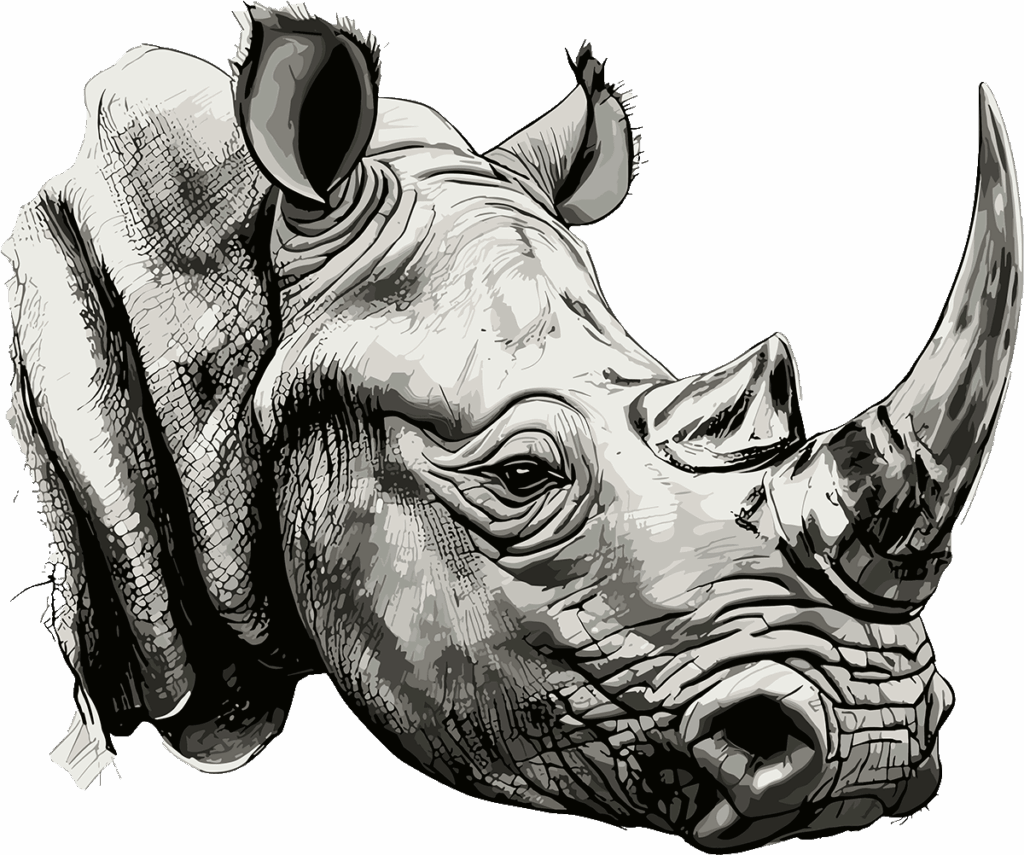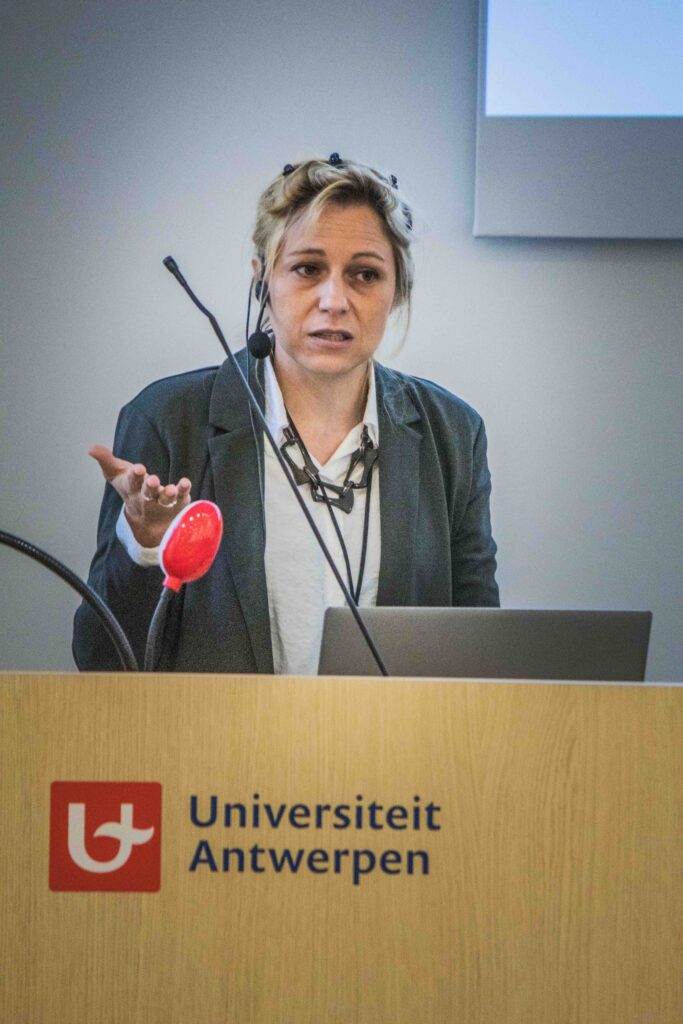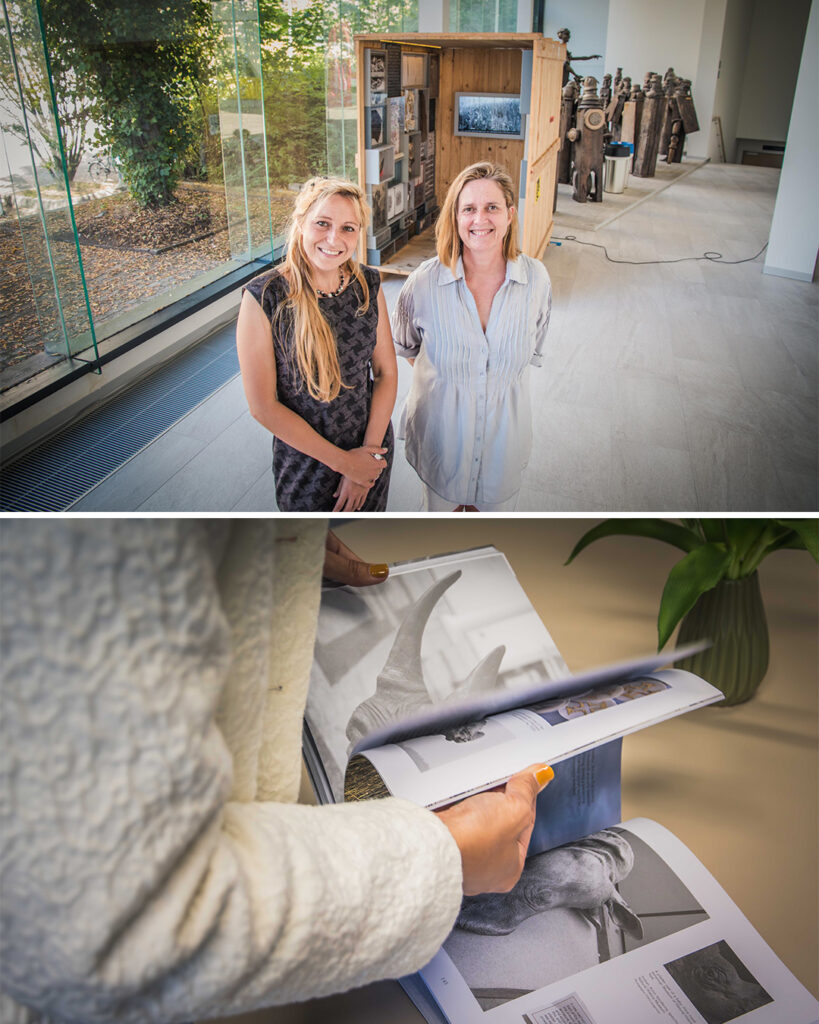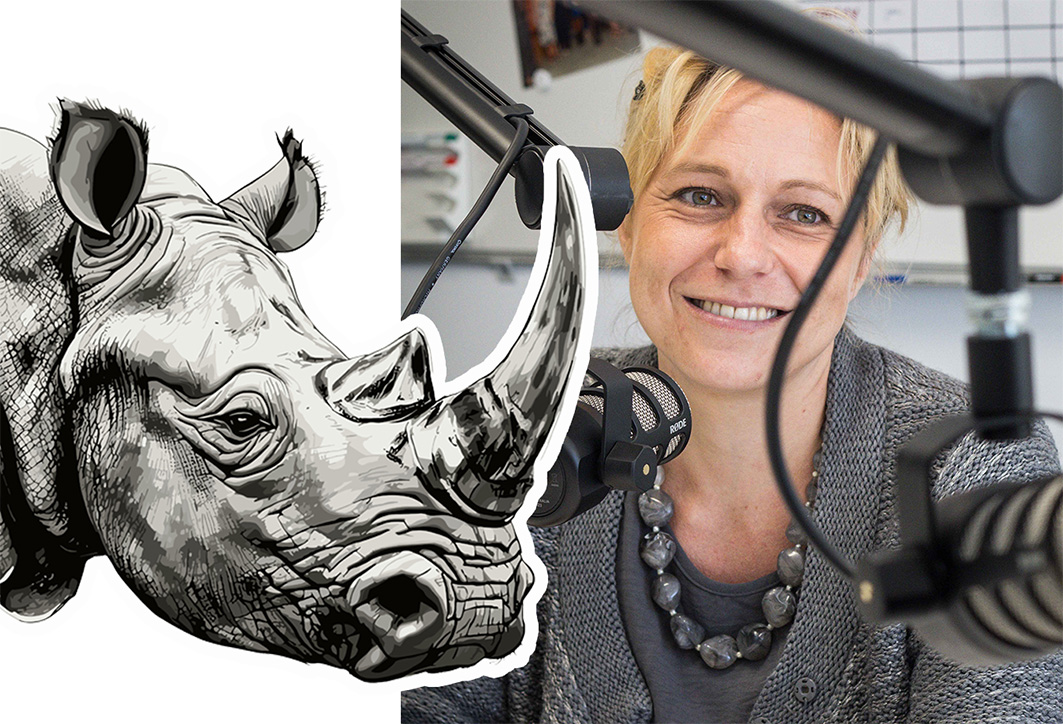[ENGLISH BELOW]
Toen in 2018 Sudan, het laatste mannetje van de noordelijke witte neushoorn, stierf leek het lot van de soort bezegeld. ‘Buiten reservaten kunnen neushoorns amper overleven door onophoudelijke stroperij en het verdwijnen van hun leefgebied’, vertelt Ruth Appeltant, professor aan de Universiteit Antwerpen. Van de noordelijke witte neushoorn zijn vandaag nog maar twee vrouwtjes over, Najin en Fatu, die moeten permanent bewaakt worden.
‘Door toedoen van de mens is het onmogelijk geworden voor de soort om zich nog natuurlijk voort te planten. Het is onze verantwoordelijkheid om ervoor te zorgen dat de soort niet uitsterft’, stelt Ruth. Een van de mogelijkheden is in vitro gametogenese (IVG), het kunstmatig aanmaken van eicellen uit stamcellen.
Beluister hier het hele interview met professor Ruth Appeltant in de podcast van Faculty Focus.
De kracht van stamcellen
Stamcellen zijn bijzonder omdat ze zich kunnen vernieuwen en uitgroeien tot andere, meer gespecialiseerde celtypes. Voor in vitro gametogenese zijn vooral de pluripotente stamcellen belangrijk. Dit zijn stamcellen die zich kunnen omvormen tot verschillende soorten celtypes. ‘Embryonale stamcellen zijn pluripotente cellen die in de natuur de gameten of voortplantingscellen vormen’, legt Ruth uit. ‘Gelijkaardige pluripotente cellen zouden dan gebruikt kunnen worden om eicellen te creëren.’
Dat is de theorie, in de praktijk is het een kwestie van blijven experimenteren met groeifactoren en voedingsmedia. ‘We gaan op zoek naar de perfecte cocktail. Niet alleen om stamcellen in leven te houden, maar ook om ze te laten ontwikkelen tot eicellen.’
Als het team van Ruth erin slaagt om nieuwe eicellen te maken van de noordelijke witte neushoorn, kan het ingevroren sperma van de laatste mannetjes gebruikt worden om een embryo te creëren.

Van muis tot neushoorn
Het onderzoek van Ruth richt zich op de neushoorn. ‘Vanuit reeds bestaande muismodellen ontwikkelen wij een varkensmodel’, zegt Ruth. ‘Daarvan kunnen we veel materiaal verzamelen uit slachthuizen. Dat helpt enorm om onderzoekstechnieken te ontwikkelen.’ Na het varkensmodel zal haar team zich richten op het paard, omdat dat fylogenetisch nauwer verwant is aan de neushoorn. ‘Bovendien hebben we ook eierstokken van de tapir in de diepvries zitten. Die staat fylogenetisch nog dichter bij de neushoorn, maar ook die eierstokken zijn heel zeldzaam en kostbaar.’

Een ethische kwestie
In vitro gametogenese is een veelbelovende biotechnologie, maar roept ook ethische vragen op. ‘IVG kan een grote meerwaarde betekenen om onvruchtbaarheid op te lossen bij zowel mens als dier’, vertelt Ruth. ‘Maar er zijn ook ethische vragen te stellen rond genetische variatie, donorautonomie en de morele status van embryo’s.’
Daarom is het volgens Ruth belangrijk dat al het wetenschappelijk onderzoek onder streng toezicht staat van ethische commissies en binnen de lijnen van de wet gebeurt. Maar dat is geen reden om terughoudend te zijn, integendeel vindt Ruth. ‘De aarde zit midden in een zesde massa-extinctie. Klassiek natuurbehoud blijft essentieel, maar het is niet voldoende. Stamceltechnologie kan een extra tool worden om soorten te beschermen. Het is een aanvulling, geen vervanging.’
Toekomst
Wie hoopt om snel een noordelijke witte neushoornkalf door de savanne te zien huppelen, moet toch nog even geduld hebben. ‘Dit soort onderzoek verloopt traag en is erg duur’, aldus Ruth. ‘Het is high risk, high gain. Binnen drie tot vijf jaar hoop ik mooie resultaten te hebben in mijn labo met het creëren van eicellen.’
Het onderzoek stopt ook niet bij het redden van één diersoort. De technieken die vandaag in functie van de neushoorn worden ontwikkeld, kunnen op termijn ook elders worden toegepast. ‘Er zijn patiënten die door ziekte of behandeling geen eicellen meer hebben. Voor hen kan IVG een oplossing bieden’, besluit Ruth.

FREIGHTED: 500 years of rhinoceros collection and display
Op uitnodiging van Ruth Appeltant kwam de reizende tentoonstelling FREIGHTED van de Zuid-Afrikaanse kunstenares en professor Fritha Langerman naar Campus Drie Eiken. De installatie toont 500 jaar beeltenis van de neushoorn en brengt op een unieke manier kunst en wetenschappen bij elkaar.
In de tentoonstelling toon Langerman hoe de neushoorn doorheen de eeuwen gezien werd als een object van spektakel, studie, betaalmiddel en begeerte. FREIGHTED verwijst naar een complexe geschiedenis waarin kolonisatie, macht en verwerving van vroegere natuurhistorische collecties met elkaar verweven zijn. Op die manier plaats Langerman vraagtekens bij de oorsprong van zulke natuurhistorische collecties en trekt ze onze culturele beeldvorming van de natuur in twijfel. Ruth Appeltant schreef voor het begeleidende boek ‘FREIGHTED, a paper cabinet’ het hoofdstuk: Stem cells, the new heroes of fertility!
How we can save the rhino from the lab
When Sudan, the last male northern white rhinoceros, died in 2018, the species seemed doomed. ‘Outside protected areas, rhinos can barely survive because of persistent poaching and habitat loss’, says Ruth Appeltant, professor at the University of Antwerp. Only two females remain today. Najin and Fatu are kept under constant guard.
‘For this species, natural reproduction is no longer possible’, Ruth explains. ‘Since humans caused this situation, we also carry the responsibility to find a solution.’ One of the most promising tools is in vitro gametogenesis (IVG)—the creation of egg cells from stem cells in the lab.
The promise of stem cells
Stem cells are remarkable because they can renew themselves and develop into other, more specialized cell types. For IVG, pluripotent stem cells are key: these can transform into many different types of cells. ‘In nature, embryonic stem cells give rise to gametes, the reproductive cells’, Ruth says. ‘If we can harness similar pluripotent cells, we may be able to create egg cells in the lab.’
That, of course, is easier said than done. Researchers must keep experimenting with growth factors and nutrient mixes to find the perfect cocktail. ‘It’s not only about keeping the cells alive’, Ruth explains, ‘but also guiding them toward becoming eggs.’ If her team succeeds in producing viable egg cells, the frozen sperm collected from the last northern white males could be used to create embryos.
From mice to rhinos
Ruth’s work focusses on the rhinoceros, but starts small. ‘We are developing a pig model based on existing mouse models’, says Ruth. ‘We can collect a lot of material from slaughterhouses. That’s a huge help in developing research techniques.’ Next comes the horse, which is more closely related to the rhinoceros. ‘We even have frozen ovaries from tapirs, which are genetically even closer to rhinos, but those samples are rare and precious.’
The ethical dimension
IVG is a groundbreaking biotechnology, but it doesn’t come without controversy. ‘It could be transformative for treating infertility in both humans and animals’, Ruth notes. ‘But it also raises questions about genetic diversity, donor consent, and the moral status of embryos.’
She stresses the importance of strict oversight by ethics committees and compliance with legal frameworks. Yet hesitation, she argues, is not the answer: ‘We are living through a sixth mass extinction. Traditional conservation remains essential, but it’s not enough on its own. Stem cell technology could become an additional tool to protect biodiversity. Not a replacement, but a complement.’
Looking ahead
Anyone hoping to see a northern white rhino calf roaming the savanna soon will need patience. ‘This kind of research is slow and costly’, says Ruth. ‘It’s high risk, high gain. Within three to five years, I hope to show concrete progress in creating egg cells.’
And the implications go far beyond rhinos. The techniques being developed today could eventually benefit humans as well. ‘Some patients lose their egg cells due to illness or medical treatments. For them, IVG might one day provide a solution’, she concludes.
FREIGHTED: 500 years of rhinoceros collection and display
At Ruth Appeltant’s invitation, the traveling exhibition FREIGHTED by South African artist and professor Fritha Langerman came to the University of Antwerp’s Campus Drie Eiken. The installation traces 500 years of rhinoceros imagery, blending art and science in striking ways.
Langerman explores how the rhino has been seen over the centuries: as spectacle, curiosity, currency, and object of desire. FREIGHTED highlights the entanglement of colonization, power, and the building of natural history collections. Raising questions about how those collections were formed and how they shape our cultural understanding of nature.
For the accompanying book, FREIGHTED: A Paper Cabinet, Appeltant contributed a chapter titled: ‘Stem cells, the new heroes of fertility!’

